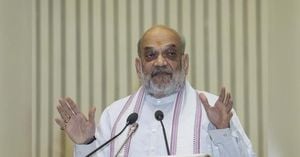At the Colorado Convention Center this September, the world’s largest psychedelics conference, Psychedelic Science 2025, drew an eclectic crowd—everyone from indigenous healers and pharmaceutical entrepreneurs to NFL stars and curious onlookers. Amid mushroom jewelry booths and the buzz of innovation, a surprising conversation took center stage: the potential of psychedelics to change not just minds, but brains battered by years of high-impact sports.
For decades, the story of psychedelics in America has been one of shifting perceptions. According to The Guardian, between 1950 and 1965, around 40,000 patients were prescribed lysergic acid—better known as LSD—to treat conditions ranging from alcoholism and schizophrenia to PTSD. Before LSD became a symbol of counterculture, it was a tool in the medical kit. Now, as research reopens old doors, athletes and scientists alike are asking: could these compounds offer hope for some of the most stubborn injuries in sports?
During a keynote panel titled “Healing Behind the Highlights,” NFL veterans Jordan Poyer, Robert Gallery, and Jon Feliciano spoke candidly about their journeys with psychedelics. Hosted by podcaster Aubrey Marcus, the conversation was less about gridiron glory and more about healing—of body, mind, and spirit. The three men described trips to retreat centers, where they drank ayahuasca, a potent Amazonian brew known for its hallucinogenic and purgative effects. For Poyer, the experience was transformative. “I’ve had many concussions,” he told WIRED after the panel, “but I’d like to think I overcame some of those brain injuries.”
Poyer’s history with brain trauma is not unique. On January 22, 2023, in a playoff clash between the Buffalo Bills and Cincinnati Bengals, Poyer collided head-to-head with a teammate while trying to stop a touchdown. The impact was so fierce that play-by-play announcer Tony Romo remarked, “That was as wicked a sound as I’ve heard.” Poyer, dazed, was forced out of the game for a head injury evaluation. Even before that moment, he’d suffered mood swings and headaches—classic symptoms of repeated concussions.
Statistics back up the severity of the problem: NFL injury records show about 692 concussions over five seasons between 2019 and 2023. The risk is more than a blip; it’s an ever-present reality for players in football, hockey, and other contact sports. Repeated concussions can lead to chronic traumatic encephalopathy (CTE), a neurodegenerative disease that impairs memory, judgment, and executive function. The condition has been found in numerous former NFL players, casting a shadow over the sport’s legacy. In some tragic cases, such as that of Aaron Hernandez, CTE was only diagnosed after death.
For Poyer, psychedelics offered a lifeline. Inspired by other NFL stars like Aaron Rodgers—who credited ayahuasca with his MVP performance—Poyer traveled to Costa Rica after the 2022 season to participate in ceremonies at Resonance, a well-known retreat. He later joined Rodgers for a ceremony filmed for a Netflix documentary. “It took me to the next level,” Poyer told The Athletic. “When I committed to the medicine it made me a better person, in all aspects of my life.” Since then, he’s taken ayahuasca ten more times and experimented with other psychoactive substances like yopo and kambo, both used in Caribbean and Amazonian rituals.
But can these mystical experiences actually heal the brain? The science is promising, if still preliminary. According to WIRED, researchers have documented that psychedelics like ayahuasca, LSD, and psilocybin can induce what’s called a “mystical experience”—a profound shift in self-understanding that may translate to psychological benefits. More recently, attention has turned to the physical brain. Some studies in animals suggest that psychedelics can promote neurogenesis, the growth of new neurons, and neuroplasticity, the formation of new connections between brain cells. As Josh Allen, a postdoctoral fellow at Vancouver Island University and the University of Victoria (not the Bills quarterback), explained, “It definitely happens in animals. But the functional significance is still pretty unknown.”
Human research, however, lags behind. Gregory Carter, chief medical officer at Providence St. Luke’s Rehabilitation Medical Center, has reviewed the literature and remains cautious. “Most of this is still a hypothetical situation,” Carter told WIRED. “I do not think the current database in humans is anywhere near adequate to support the use in human subjects with brain injury.” Carter warns that self-medicating with psychedelics carries risks, emphasizing the need for controlled, monitored environments.
Brandon Weiss, an assistant professor at Johns Hopkins University’s Center for Psychedelic and Consciousness Research, agrees that the evidence for reparative neuroplasticity in humans is not yet clear. “We have not yet found actual structural, neuroimaging evidence of these sorts of repairs, post-psychedelic intervention,” he said. Still, Weiss is optimistic—he’s part of a team recruiting military veterans to study the effects of compounds like ibogaine and 5-MeO-DMT on traumatic brain injury symptoms. If these treatments help “wounded warriors,” they might also benefit athletes.
Meanwhile, the NFL and its players’ union do not prohibit ayahuasca or other classical psychedelics. The league’s drug policy does screen for MDMA, but not for substances like psilocybin or ayahuasca. According to WIRED, the union is aware that players experiment with these compounds and aims to provide guidance. Nevertheless, Poyer says he’s been drug-tested every time he’s returned from a retreat, suggesting the league keeps a close eye on its players’ activities.
Beyond anecdotal accounts, clinical research is gaining steam. Earlier this month, a study published in the Journal of the American Medical Association examined MM120, a proprietary, pharmaceutically optimized form of LSD, as a treatment for generalized anxiety disorder. The results were striking: a single dose produced a dose-dependent reduction in anxiety among participants with moderate to severe symptoms. Those receiving 100- or 200-microgram doses fared better than those given a placebo. Interestingly, 10.3% of placebo recipients still reported hallucinations, suggesting the power of expectation and environment. As NPR’s Jon Hamilton noted, the setting of these studies may play a significant role in outcomes—a factor researchers are eager to explore further.
Animal studies are also expanding the field. At the University of California San Francisco, neuroscientists are designing rodent experiments to investigate analogues of 5-MeO-DMT for cognitive impairment and traumatic brain injury. Manesh Girn, a postdoctoral neuroscientist at UCSF, has spoken with ex-NHL players and mixed-martial artists who “self-medicate” with psychedelics. He notes that psilocybin has shown promise in rats exposed to repeated concussions, but the research is still awaiting peer review.
For now, much of the hope rests on neuroplasticity—the brain’s ability to forge new connections. The medial prefrontal cortex, a region affected by psychedelics and implicated in CTE, is of particular interest. As Girn explained, “A lot of [psychedelic-induced] neuroplasticity research has shown regeneration in those areas,” though evidence is stronger in animals than in people.
For Poyer, the benefits have been holistic. He credits psychedelics not just with physical healing, but with improved relationships and a new sense of self. “Now I look back and think: Damn. Imagine how messed up my head could be?” he reflects. As the 2025 NFL season approached, Poyer rejoined the Buffalo Bills’ practice squad, eager to mentor young players—not just in football, but in breathwork, plant medicine, and life beyond the field.
As research continues and the stigma around psychedelics fades, the intersection of sports, neuroscience, and ancient medicine may yield answers for athletes and others seeking healing. For now, the journey is just beginning, but the conversation is louder—and more hopeful—than ever.




